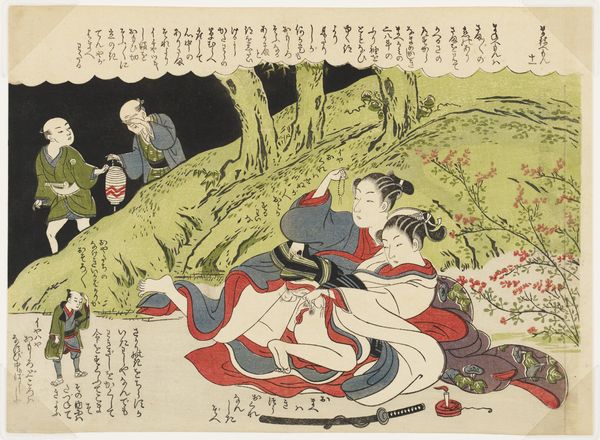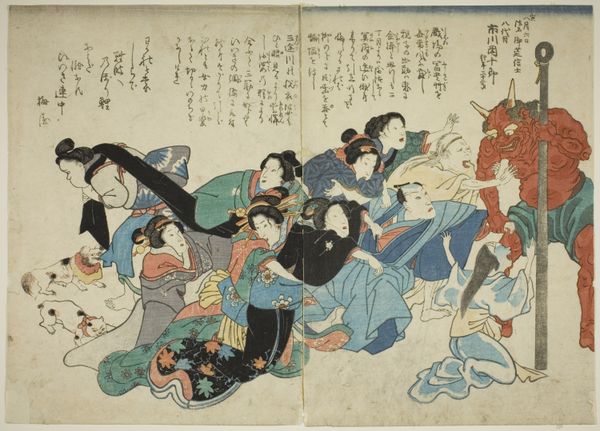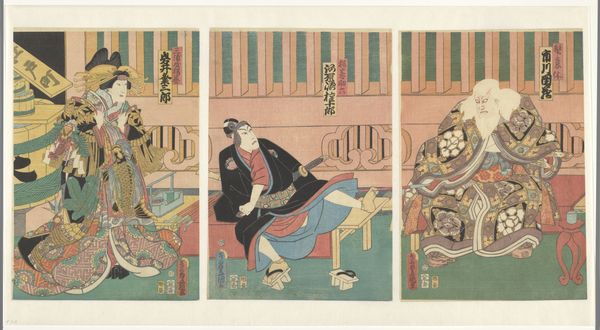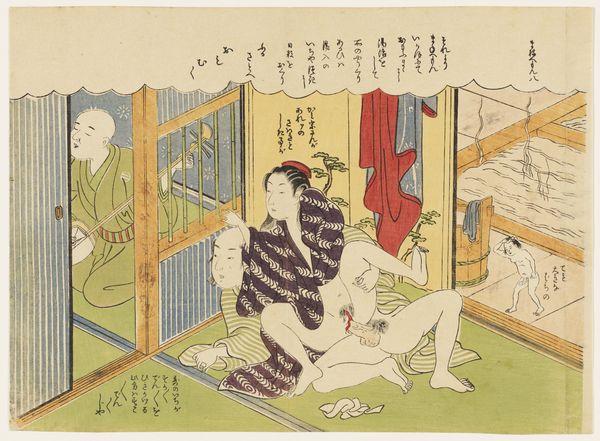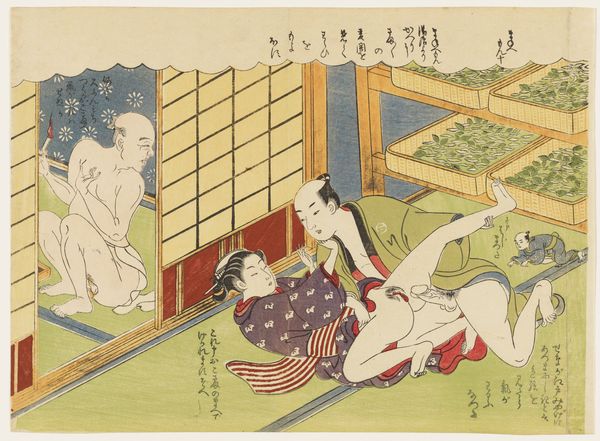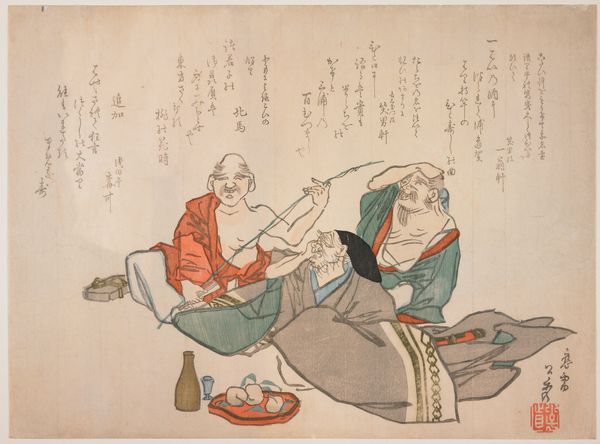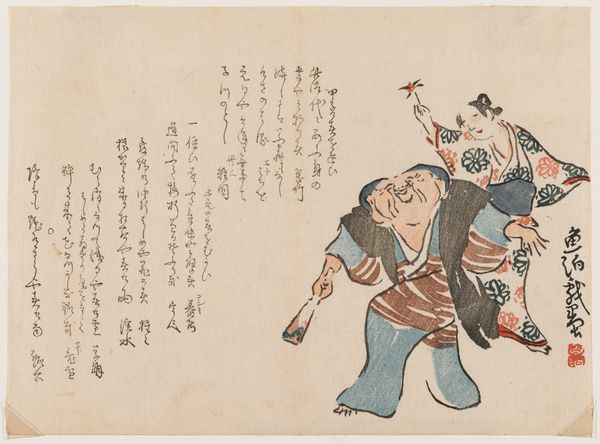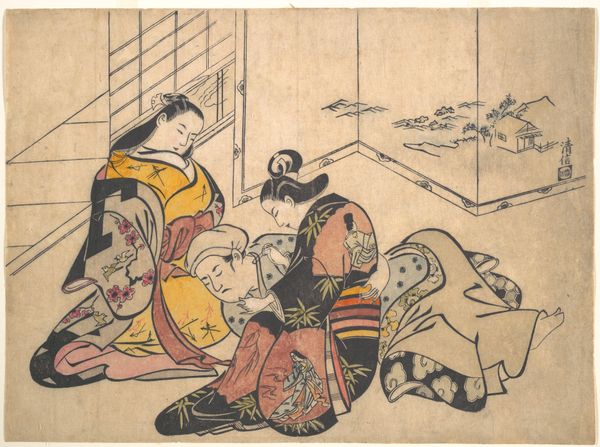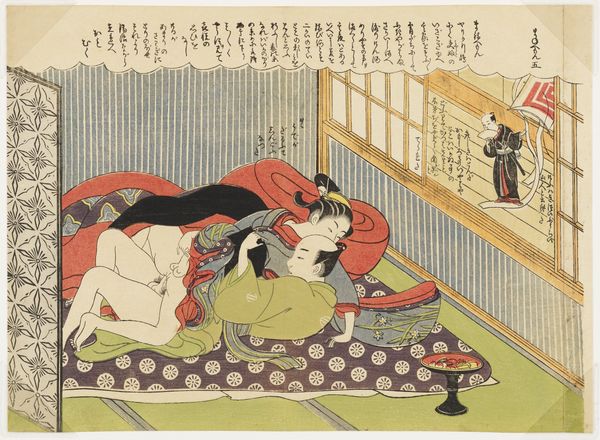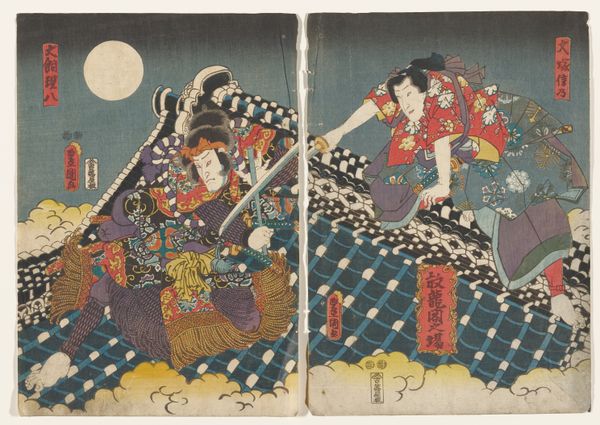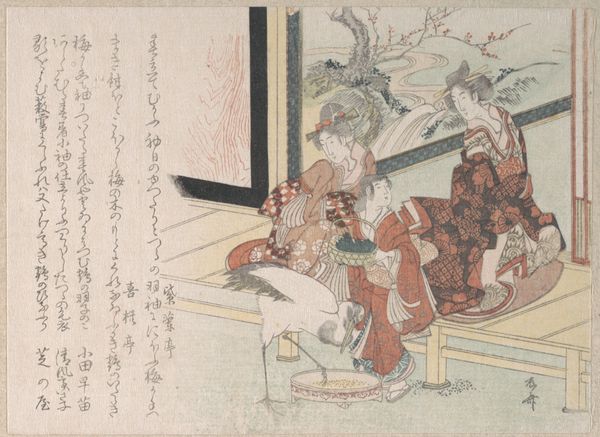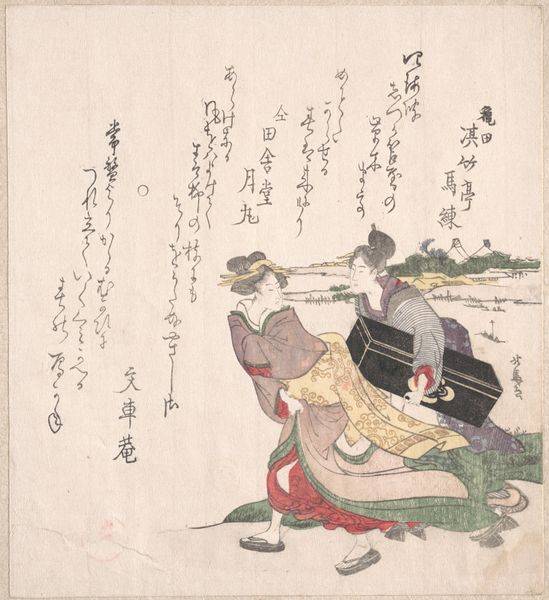
print, ink, color-on-paper
#
quirky illustration
#
cartoon like
# print
#
traditional media
#
japan
#
personal sketchbook
#
ink
#
color-on-paper
#
illustrative and welcoming imagery
#
wedding around the world
#
illustrative and welcoming
#
watercolour illustration
#
cartoon style
#
cartoon carciture
Dimensions: 8 1/4 × 11 1/2 in. (20.96 × 29.21 cm) (sheet, horizontal chūban)
Copyright: Public Domain
Curator: Here we have Suzuki Harunobu’s print, "Forced Love," created around 1768-1770. It’s a color woodblock print, utilizing ink and color on paper, now residing at the Minneapolis Institute of Art. Editor: The first thing that strikes me is the sheer flatness. It's like viewing a stage set, everything deliberately arranged for the eye, with those bold, clear outlines defining each form so precisely. Curator: Yes, Harunobu's work arrived during a really interesting period in Edo society, where consumer culture flourished amongst the merchant class, creating a new demand for art that reflected their lives. Images of courtesans, actors, and everyday scenes became increasingly popular, fueling the ukiyo-e boom. It is a romantic, even erotic interpretation. Editor: The interplay between geometric planes and curvilinear forms is particularly captivating. The sharp angles of the room create a kind of dynamic tension against the rounded figures. Look at how the diagonals intersect, drawing our eyes toward the embracing figures as a compositional focal point. I'm also really interested in his lines that render the texture in a decorative way. Curator: It speaks volumes about the negotiation of desires and the construction of feminine ideals. Harunobu’s prints circulated in a context where print culture shaped perceptions of beauty and desirability, influencing social interactions, and, in fact, even love itself. The title can be off-putting at first. The narrative complexity and suggestive themes would have created a dialogue for viewers at that time. Editor: Precisely, the visual structure of this work echoes broader philosophical ideas as well. There’s the tension between the ideal and the real, a theme found in traditional aesthetic considerations, which this reflects so succinctly in formal, structured, terms. It makes one wonder what kind of critical language would have been used to evaluate such works at that time. Curator: It reminds us that even seemingly innocent imagery can reflect and reinforce deeper cultural narratives. Seeing through that today really helps you view it with fresh eyes. Editor: Agreed. Looking beyond the intimate moment, this work really offers a window into a structured world with an almost theatrical feel.
Comments
minneapolisinstituteofart almost 2 years ago
⋮
Mane'emon's first encounter is to witness a calligraphy teacher taking advantage of a young pupil by forcing himself on her while promising to promote her ahead of her fellow students. She protests: "Oh my master, please let me go." Mane'emon hides beneath the table and expresses his outrage at the teacher's reprehensible behavior: "Poor girl", and points out his large nose- a feature associated with people of an evil nature. As Mane’emon disapproves of the scene, it is left to the cats on the verandah to take up the responsibility of mimicking the action in this print.
Join the conversation
Join millions of artists and users on Artera today and experience the ultimate creative platform.
